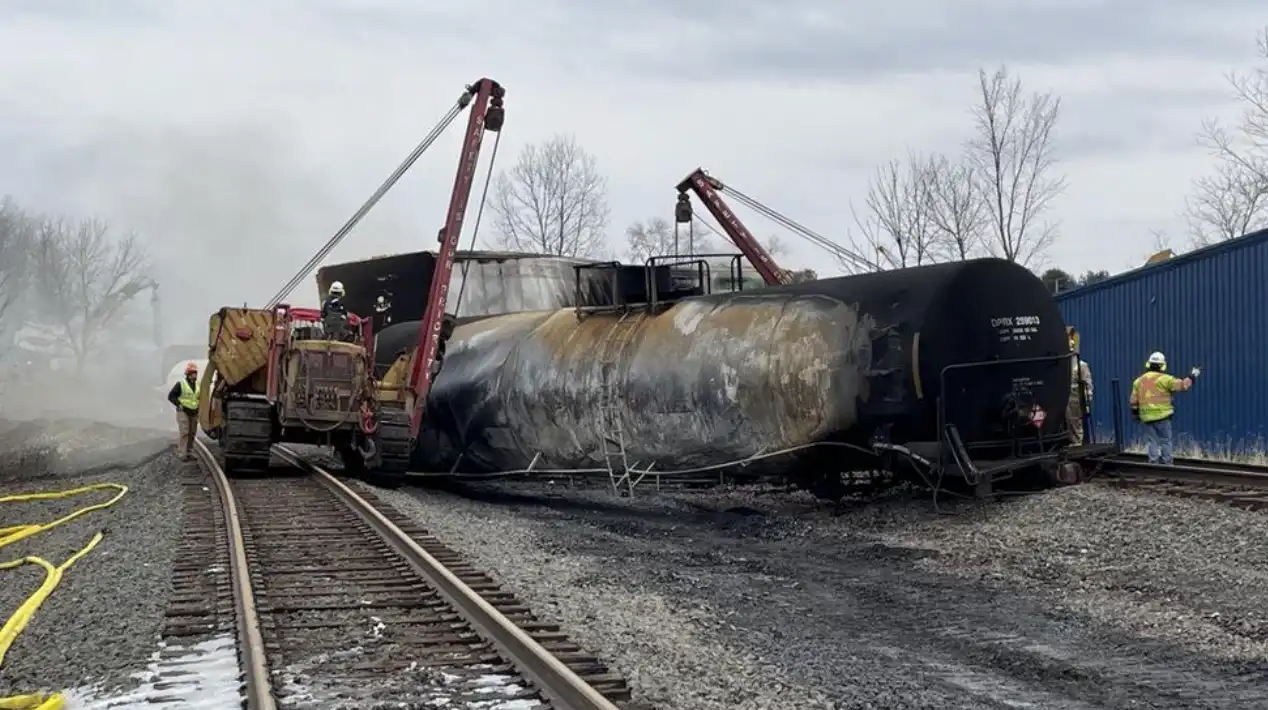The East Palestine Train Derailment Could Have Been Avoided
Residents of East Palestine, Ohio may have to live with uncertain chemical exposures for an indefinite amount of time after a derailment in the area spilled toxic waste into the environment.

Photo by BCC
On Friday, February 3, 50 cars on a 150-car Norfolk Southern freight train derailed in East Palestine, Ohio. Out of the 50 derailed cars, 20 of them were identified to be carrying hazardous chemicals. Two days following the event on February 5, Ohio Governor Mike DeWine issued an evacuation order for residents living in a one-mile radius of the derailment only for authorities to allow them to return home 48 hours later.
Although residents of East Palestine have been assured by the authorities that the risk of chemical exposure remains low, many are still hesitant to return to their homes. Some residents have reported their children getting nauseous and observed animals experiencing adverse health effects or death, contradicting the government’s claim that the area is completely safe.
The U.S. government’s Federal Emergency Management Agency (FEMA) and the Environmental Protection Agency (EPA) continued measuring the surrounding area’s groundwater this week and began the removal process of 1.8 million gallons of waste to waste management facilities around the country. A final plan for complete waste extraction has not yet been confirmed.
But what caused this to happen? According to the National Public Radio, this disaster was mainly caused by an overheated wheel bearing, with hot box detectors along the tracks that detected temperature spikes of the train's wheel bearings before the derailment. In a report by the National Transportation Safety Board, wheel bearing temperatures were measured at abnormally high temperatures. After reaching 253 degrees, the censors alerted the train conductors, but by then, it was already too late and the bearing was compromised to the point of failure.
Portrayed by the NTSB and Norfolk Southern, this seems like a surface-level incident summed up as a tragic accident caused by "delayed" sensor alerts. However, the reality is people are suffering due to their negligence while corporations bear little responsibility.
The implications regarding train derailments do not just extend to their literal errors, but the very real negative health effects they may have on the surrounding population and environment. Stopping these things from occurring is not a matter of simply adding new sensors to the rail and forgetting the incident only for it to reappear in another city in the future. It is a matter of public safety. That being said, What could we do to prevent this from happening again?
1. Holding Transportation Companies Accountable
This is not Norfolk Southern’s first involvement in a train accident that occurred as a result of negligence in regulations and safety protocols. On January 6, 2005, Graniteville, South Carolina, saw a chlorine spill that, according to the National Transportation Board, was due to “the failure of the crew of Norfolk Southern Train P22P to return a main line switch to the normal position after the crew completed work at an industry track”.
There seems to be a commonality in how this transportation company has evaded serious penalties by paying fines along with cleanup and inconvenience fees. When does hiding behind flimsy safety regulations and minuscule financial promises to avoid legal action raise alarm bells about their real interests? We must adopt a proactive approach that penalizes these companies for their continued negligence on a long-term scale and not a one-time “consequences of your actions” fee. Without changing our approach, the opportunity to hold these companies accountable will only come at the cost of potentially harming more innocent people.
2. Re-emphasizing Railroad Safety
The railroad transportation industry is actively trying to cut down on costs. This is often realized in the form of cutting corners and not paying attention to safety details. This becomes apparent in recent years as Norfolk Southern has pushed for an introduction of the “one-man” operation system.
Implementing this system would mean that instead of a traditional 2-person operation system (1 conductor and 1 engineer), the conductor’s role would be filled by a machine. The only person aboard the train would be a designated engineer. Mark Geroge, Norfolk Southern’s chief financial officer, stated at an investors conference in 2019,
Technology “has rendered the role of a conductor in the cab itself unnecessary”.
This idea of redistributing current employees to more “needed” areas was “better for all stakeholders, including the crew people themselves.” The “crew people,” however, seem to agree. Greg Hynes, legislative director of the Sheet Metal, Air, Rail Transportation union [SMART-TD], told CNN that he would
I pose this question to you. Would you feel safe knowing the presented circumstances? Knowing that a potential threat to your health and community was under the control of a machine developed and endorsed by those with the interests of only investors in mind?
*For a comprehensive (and chronological) list of events related to the derailment in East Palestine, Ohio, I recommend this list compiled by CNN as a starting point: It’s been 3 weeks since a freight train carrying hazardous chemicals derailed in Ohio. Here’s what’s happened since.